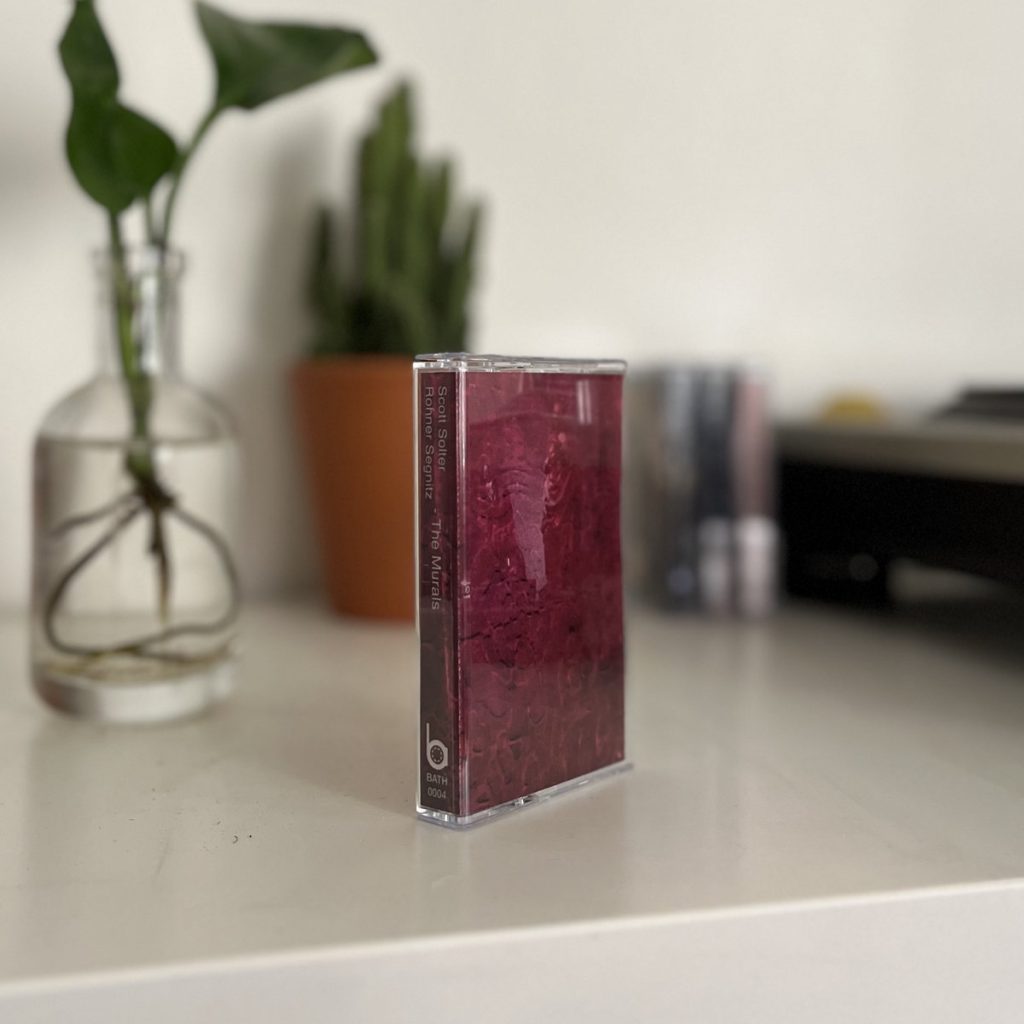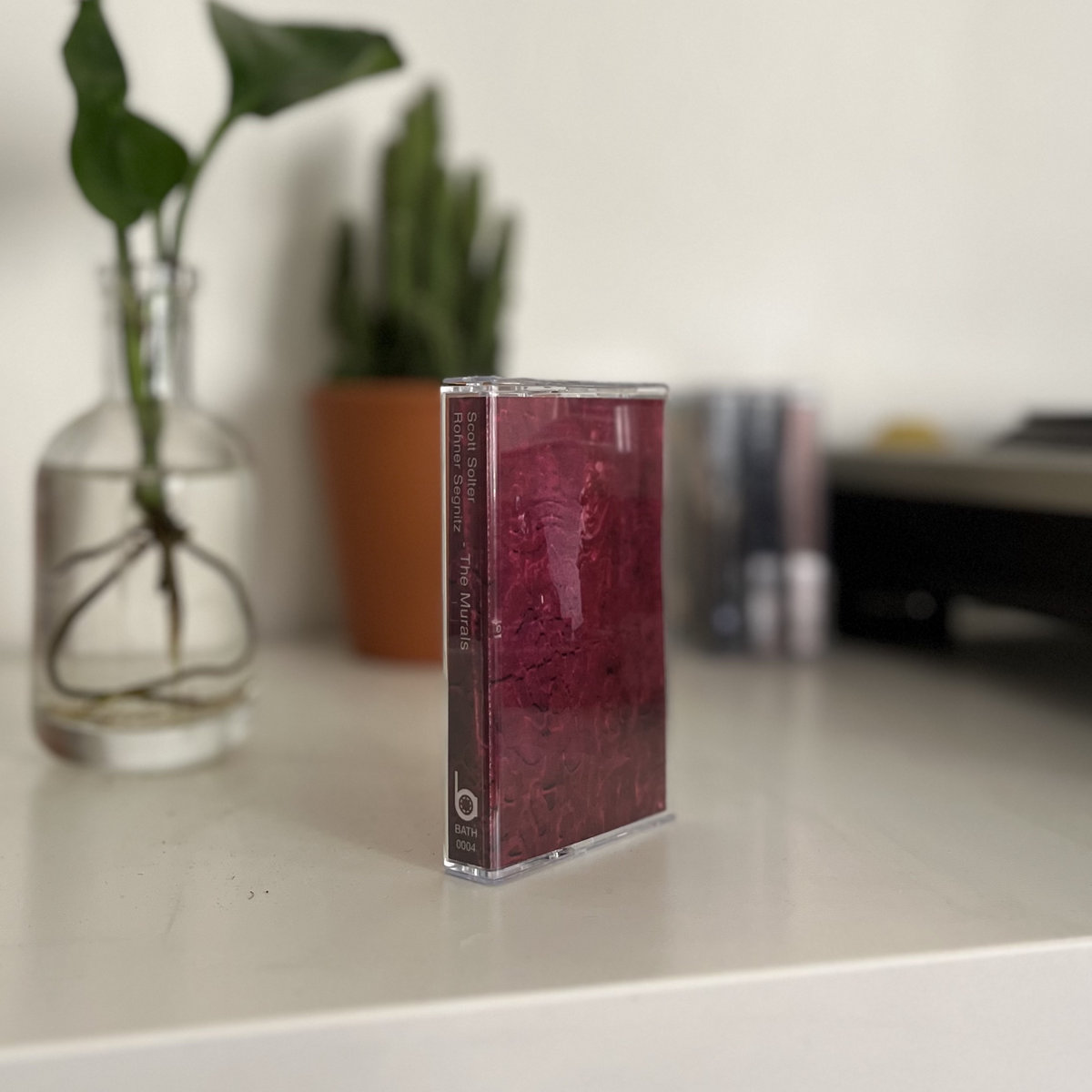Scott Solter & Rohner Segnitz – The Murals
10.25.2023 by Ryan Masteller

Scott Solter and I go way back. Well, maybe not in a traditional sense, meaning, I don’t know Scott Solter – I certainly don’t want to come off as creepy or anything. But I’ve been familiar with Scott’s material ever since he reworked a bunch of tunes by Pattern Is Movement, the delightfully wispy math-rock duo from Philadelphia. Staining their proclivities with studio trickery and mulching their stems to a wonderfully unrecognizable pulp, Solter repurposed the early PIM tracks until they barely resembled the originals, cementing himself as an inventive producer par excellence. This was 2006, closer to twenty years ago than I’d like.
Rohner Segnitz and I do not go as way far back, but that’s only because I didn’t engage his band Division Day – who released four records throughout the early aughts, if you didn’t know – in a meaningful way. (Nor did I really encounter Scott Solter’s bands Boxharp or The Balustrade Ensemble.) How can you blame me? The first decade of the 2000s was the blog decade, when music fans like me were inundated with basically anything we wanted to hear at the click of a download, and bands appeared and released music with an immediacy and ungodly speed that often proved to be their undoing. Not that Rohner Segnitz suffered this fate, mind you – I place all the blame for my ignorance squarely on myself. What else can I do?
Turns out there is something I can do, and that’s to rectify the decade plus in the desert of not listening to these artists, which is easily accomplished because of Solter and Segnitz’s April 2023 cassette release on Bathysphere Records, The Murals. And while we’re not getting anything here that I would have expected from either of these artists, I’m also delighted that what is here hits the old pleasure centers of my brain in just the right ways that I’ve come to hope for whenever I pop a new tape in the deck. (I almost always hit eject pretty quickly on any guitar-based indie band these days, which wasn’t the case in my formative years, but I think we’ve established that those formative years were pretty long ago.) Solter and Segnitz instead build their compositions from a “simple figure/gesture that grabs our interest” and work that figure/gesture into a “maximal” state, one that grips attention and twists and tweaks it until you’re left with a psychic red-armed “snakebite.”
The result in The Murals is eleven vibrant pieces that shift and redraw themselves as they unfold, routinely breaking from a haze of static or ambient gauze to puncture any boundary imposed upon them in the interest of mutation. This is what the duo means in their intent to go “maximal” from a minimal base – they establish the atmosphere through “instrument, tape, wire, module, filter, sample,” then, using the same methods, they disturb what could simply be an ambient groundwork with melody, noise, or more and more intense ambience, ratcheting up the tension of the tracks until they break back into silence, rarely resolving into an expected state.
The Murals could be mentioned in the same breath as the more abstract works of Derek Piotr, whose recordings, especially Tempatempat, from which “Horror Vacui” utilizes “Slow March,” are invariably thrilling. Erik Friedlander, the cellist whose credits include collaborations with John Zorn, Wadada Leo Smith, and the Bar Kokhba Sextet, also lends a hand to “The Sea Breaks Over a Derelict,” and in doing so offers a wide-angle perspective on The Murals as a whole: if you cock your head to one side, at the correct angle, the song cycle in total resembles a Cubist interpretation of an actual cello, its entirety – body, strings, conception – an object of hyper-revision and composition. But maybe that’s just me – I see cellos everywhere for some reason. Whatever you get here, Solter and Regnitz are clearly painting outside the lines and making up their own rules, and it’s because of that that The Murals resoundingly succeeds.

